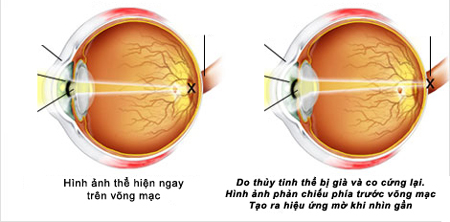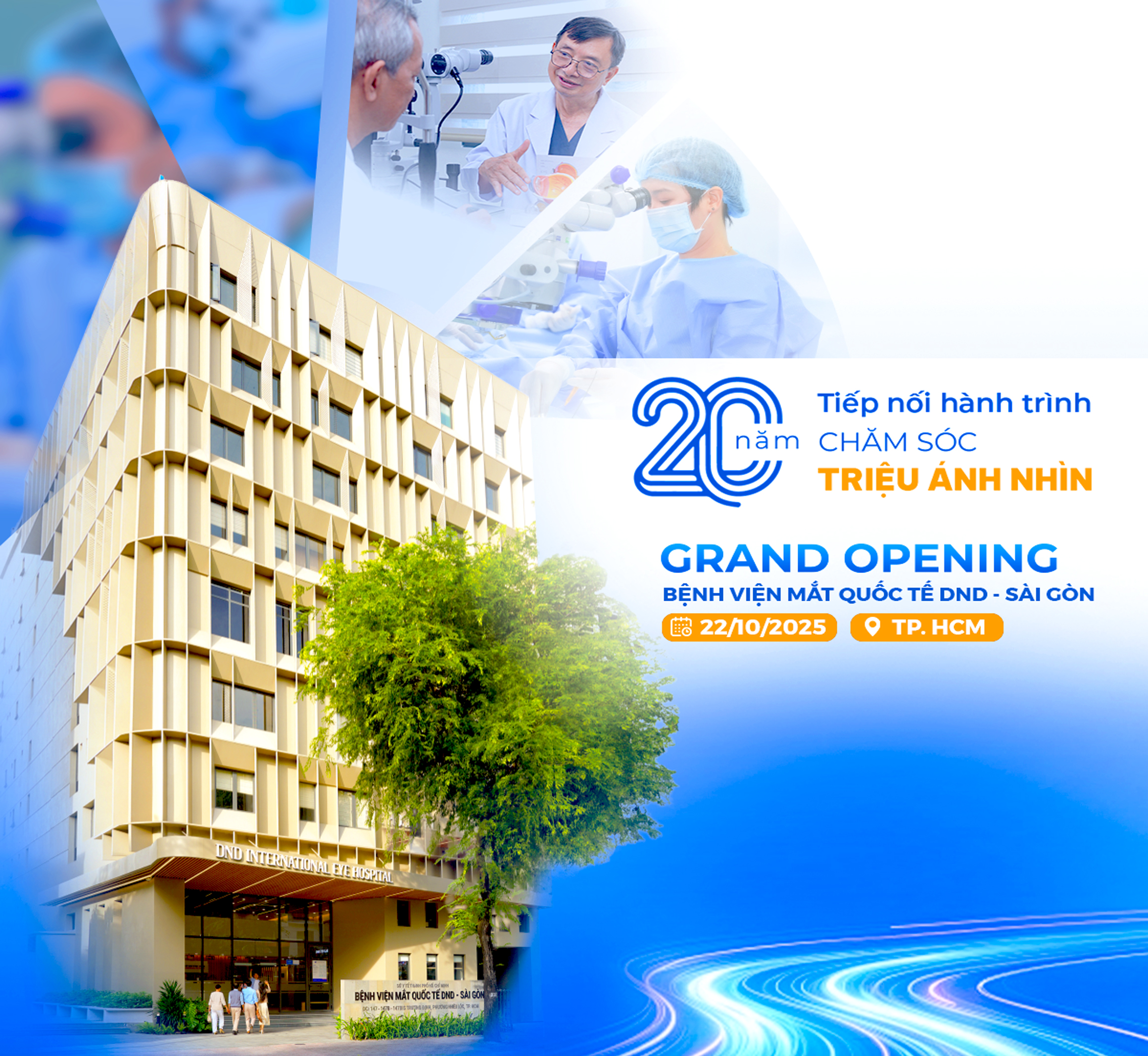- Home
- About us
- About usBệnh viện mắt quốc tế – DND là bệnh viện chuyên khoa mắt công nghệ cao với đội ngũ bác sĩ dày dặn kinh nghiệm
- Our historyĐược thành lập từ năm 2011, bệnh viện đã từng bước chuyển mình trong đầu tư công nghệ và nhân lực
- Our vision and missionMục tiêu “Vì đôi mắt cộng đồng” đem lại cho người bệnh dịch vụ và công nghệ hiện đại nhất phù hợp với thu nhập
- Our staff
- Our Equipment
- Our divisions
- Services
- Department of Refractive ErrorsTrung tâm khúc xạ. Điều trị và phẫu thuật khúc xạ và lão thị.
- Department of Cataract TreatmentsTrung tâm phẫu thuật Phaco Phẫu thuật điều trị bệnh Đục thủy tinh thể
- Department of Fundus IssuesTrung tâm tầm soát Võng mạc. Điều trị và tầm soát các bệnh lý đáy mắt.
- Department of Diagnostic and TreatmentKhám và điều trị ngoại trú các bệnh lý về mắt.
- Department of Eye Cosmetic SurgeriesTrung tâm điều trị thẩm mỹ vùng mắt và phẫu thuật trung phẫu thẩm mỹ
- Membership CardCác gói thẻ theo dõi và điều trị (Khúc xạ, Đáy mắt), và hỗ trợ ( thẻ Family, thẻ VIP )
- For customers
- News and Events
- Contact us
Presbyopia
Presbyopia
[:vi]
LÃO THỊ LÀ GÌ?
Nhiều người cho rằng Lão thị là Viễn thị nhưng không phải vậy. Cần phân biệt hai loại này vì Viễn thị là một tật khúc xạ, nó có thể xuất hiện ngay cả ở trẻ em còn lão thị chỉ là một biến đổi sinh lý của mắt chỉ xuất hiện ở lứa tuổi ngoài 40, do mắt giảm khả năng điều tiết khi qua tuổi 40.
Như đã nêu ở trên, thuỷ tinh thể là một thấu kính hội tụ đặc biệt vì nó có khả năng thay đổi được độ cong để nhìn rõ một vật ở gần mắt nhờ tính đàn hồi (người ta gọi đây là hiện tượng điều tiết).
Nhưng sự đàn hồi của thuỷ tinh thể ngày càng kém đi cho đến khi ở vào lứa tuổi trên 40, sự suy giảm sức điều tiết của thuỷ tinh thể gây trở ngại cho việc đọc sách và làm công việc gần. Do đó ở lứa tuổi này muốn đọc sách người ta thường phải đưa sách ra xa mắt.
 |
<-> |  |
Lão thị thường xuất hiện muộn hơn ở người cận thị và sớm hơn ở người viễn thị Các triệu chứng thường gặp của lão thị: Nhìn mờ các vật ở gần, đọc những chữ nhỏ khó khăn, mệt mỏi mắt khi đọc ở nơi có ánh sáng yếu hoặc vào lúc cuối ngày, mỏi mắt nhức đầu khi làm việc gần kéo dài, phải đưa sách ra xa mới đọc được. Lão thị được chia thành: – Chính thị lão thị: nhìn gần khó khăn, nhìn xa tốt. – Cận thị lão thị: nhìn gần dễ dàng, nhìn xa kém. – Viễn thị lão thị: nhìn xa vẫn phải điều tiết, nhìn gần rất khó khăn, mau mỏi mắt, chảy nước mắt.
ĐIỀU TRỊ LÃO THỊ BẰNG KÍNH
Để điều chỉnh lão thị, người ta sẽ cho bệnh nhân đeo kính hội tụ để bù đắp cho sự điều tiết mất đi. Chính vì việc cho đeo kính hội tụ này làm cho nhiều người lẫn lộn giữa lão thị và viễn thị vì cả hai đều đeo kính hội tụ. – Chính thị lão thị: đeo kính nhìn gần. – Cận thị lão thị: đeo kính nhìn xa. – Viễn thị lão thị: phải sử dung 2 kính, một kính nhìn gần + 1 kính nhìn xa.
 |
<–> |  |
ĐIỀU TRỊ LÃO THỊ BẰNG PHẪU THUẬT
Người trên 40 tuổi lão thị có hoặc không có tật khúc xạ (cận-viễn- loạn thị) kèm theo thì có thể phẫu thuật laser giúp cho việc không phải đeo kính khi nhìn xa thì cũng có thể bỏ được kính khi nhìn gần (đọc, viết…). Những thế hệ máy laser mới hiện nay (như Nidek Quest và Mel90) sử dụng công nghệ đo “tiền sóng ” và các phần mềm tính toán điều trị lão thị (CRS Master) thì các bệnh nhân lão thị có thêm cơ hội lựa chọn để không lệ thuộc vào kính.
Phương pháp điều trị lão thị Presbyond kết hợp giữa sự chính xác của phẫu thuật khúc xạ bằng laser trên giác mạc, kèm việc tác động vào thành phần quang sai bậc cao của mắt, nhằm tăng chiều sâu trường nhìn nét để duy trì chất lượng thị giác ở các khoảng nhìn cho bệnh nhân.
Presbyond dùng laser excimer tạo ra cầu sai cho mắt, tăng phạm vi tác động nhiều hơn so với phẫu thuật đơn thị bằng laser thông thường. Trong phương pháp này, bác sĩ sẽ chủ động tạo mắt chủ đạo nhìn rõ vật ở xa và mắt không chủ đạo để nhìn rõ vật ở gần.
Khi kết hợp thị giác hai mắt, người bệnh sẽ có một vùng thị giác hòa lẫn, tốt không chỉ cho những hoạt động cần nhìn xa (lái xe, màn hình chiếu phim, hội trường, phòng họp…), nhìn gần (đọc sách, báo, điện thoại…) mà cả ở vùng trung gian (màn hình vi tính, bảng điều khiển xe hơi…).
Như vậy, Presbyond tạo nên vùng nhìn linh hoạt, thoải mái với biên độ trải dài từ khoảng cách xa đến gần, thuận tiện cho mọi hoạt động của bệnh nhân mà không cần phụ thuộc vào cặp kính. Điều đáng nói là thời gian để phẫu thuật 2 mắt theo phương pháp này chỉ diễn ra trong khoảng 10 phút, hoàn toàn dùng laser. Thị lực của bệnh nhân cải thiện rất nhanh sau khi phẫu thuật  [:en]Presbyopia usually occurs beginning at around age 40, when people experience blurred near vision when reading, sewing or working at the computer.
[:en]Presbyopia usually occurs beginning at around age 40, when people experience blurred near vision when reading, sewing or working at the computer.
Presbyopia Symptoms And Signs
When people develop presbyopia, they find they need to hold books, magazines, newspapers, menus and other reading materials at arm’s length in order to focus properly. When they perform near work, such as embroidery or handwriting, they may develop headaches, eye strain or feel fatigued.
What Causes Presbyopia?
Presbyopia is caused by an age-related process. This differs from astigmatism, nearsightedness and farsightedness, which are related to the shape of the eyeball and are caused by genetic and environmental factors. Presbyopia generally is believed to stem from a gradual thickening and loss of flexibility of the natural lens inside your eye. These age-related changes occur within the proteins in the lens, making the lens harder and less elastic over time. Age-related changes also take place in the muscle fibers surrounding the lens. With less elasticity, the eye has a harder time focusing up close. Other, less popular theories exist as well.
Presbyopia Treatment: Eyeglasses
Eyeglasses with bifocal or progressive addition lenses (PALs) are the most common correction for presbyopia. Bifocal means two points of focus: the main part of the spectacle lens contains a prescription for distance vision, while the lower portion of the lens holds the stronger near prescription for close work. Progressive addition lenses are similar to bifocal lenses, but they offer a more gradual visual transition between the two prescriptions, with no visible line between them. Reading glasses are another choice. Unlike bifocals and PALs, which most people wear all day, reading glasses typically are worn just during close work. If you wear contact lenses, your eye doctor can prescribe reading glasses that you wear while your contacts are in. You may purchase readers over-the-counter at a retail store, or you can get higher-quality versions prescribed by your eye doctor.
Presbyopia Treatment: Contact Lenses
Presbyopes also can opt for multifocal contact lenses, available in gas permeable or soft lens materials. Another type of contact lens correction for presbyopia is monovision, in which one eye wears a distance prescription, and the other wears a prescription for near vision. The brain learns to favor one eye or the other for different tasks. But while some people are delighted with this solution, others complain of reduced visual acuity and some loss of depth perception with monovision. Because the human lens continues to change as you grow older, your presbyopic prescription will need to be increased over time as well. You can expect your eye care practitioner to prescribe a stronger correction for near work as you need it.
Presbyopia Treatment: Surgery
Surgical options to treat presbyopia also are available. One example is Refractec Inc.’s conductive keratoplasty or NearVision CK treatment, which uses radio waves to create more curvature in the cornea for a higher “plus” prescription to improve near vision. The correction is temporary and diminishes over time. The procedure is performed on one eye only for a monovision correction.
LASIK also can be used to create monovision, in which one eye is corrected for near vision while the other eye is stronger for distance vision. With the recent introduction of presbyopia-correcting intraocular lenses, some people undergoing cataract surgery may be able to achieve clear vision at all distances. Also, an elective procedure known as refractive lens exchange may enable you to replace your eye’s clear but inflexible natural lens with an artificial presbyopia-correcting lens for multifocal vision. This is essentially cataract surgery, but it’s performed on people who don’t have cataracts for the purpose of providing all-distance vision.[:]
Đội ngũ Bác sỹ
Trang thiết bị
Các thông tin trên website Matquocte.vn chỉ dành cho mục đích tham khảo, tra cứu, khuyến nghị Quý khách hàng không tự ý áp dụng. DND không chịu trách nhiệm về những trường hợp tự ý áp dụng mà không có chỉ định của bác sĩ.
Chính sách quản lý bảo vệ, khai thác & đảm bảo an toàn thông tin khách hàng sử dụng website.
Copyright 2023 International Eye Hospital | All right reserved.

































